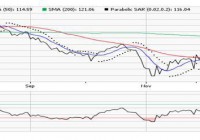Guide To European Hedged ETFs
Apart from the oil price havoc, Europe has taken center stage globally with the start of the New Year thanks to the struggling economy, political instability in Greece and tumbling Euro. This is especially true as fears of the opposition party’s win in Greece later in the month led to apprehensions of the country’s departure from the Eurozone. Europe is struggling with slow growth, tumbling inflation, higher unemployment and deflation fears that have been stalling the burgeoning Euro zone economic recovery for several months. This is especially true as PMI Composite index, for the Euro zone fell to 51.4 in December from the flash estimate of 51.7. However, it is up from the 16-month low of 51.1 in November, suggesting that economic and business activity in the Eurozone is growing but at an anemic pace. In fact, the PMI Composite index grew by just 0.1% in the final quarter of 2014 driven by continued downturn in France and Italy as well as a faltering Germany, a powerful engine and the largest economy of Europe. Additionally, several months of decline in energy prices has finally trapped Eurozone into deflation for the first time in more than five years. Inflation has turned negative with consumer prices falling 0.2% year over year in December. All these sluggish fundamentals have bolstered the case for aggressive quantitative easing (QE) measures by the European Central Bank (ECB) that might be similar to the policies that the U.S. or U.K. undertook over the past few years. The ECB signaled last week that it could announce a major bond-buying program later this month to reinvigorate growth in the continent and fight deflation. If successful, this will propel the European stocks higher but continue to weigh on the currency. The euro tumbled to a nine-year low of $1.18 against the greenback. The downfall can also be credited to the measures taken by the ECB last year when it cut interest rates to record lows and supported the purchase of some private-sector bonds. Further, the strengthening the U.S. economy and the prospect of rising interest rates sometime in mid 2015 are driving the U.S. dollar upward, thereby resulting in depreciation of the euro against the USD. However, a slumping euro will actually benefit exporters and the manufacturing industry, resulting in soaring stock prices. This is because Japan is primarily an export-oriented economy and a weaker currency makes its exports more competitive. It will also help in improving the regions’ trade balances. Given this, investors may still want to play the European space while simultaneously seeking protection against the sliding euro. Fortunately, there are a handful of euro-hedged ETFs available on the market, any of which could be excellent choices in the current environment. Below, we have profiled some of these in detail for those who are looking for a hedged European ETF exposure at this time: WisdomTree Europe Hedged Equity Index Fund ( HEDJ ) This fund offers exposure to the European stocks while at the same time provides hedge against any fall in the euro. This will be done by tracking the WisdomTree Europe Hedged Equity Index. In total, the fund holds 126 securities with a heavy concentration on the top 10 holdings at 45.4%. However, it is pretty well spread across a number of sectors with consumer staples, industrials, consumer discretionary, financials and health care taking double-digit exposure. Among countries, Germany (26%), France (24.5%), Spain (18%) and the Netherlands (16.7%) dominate the holdings list. HEDJ is one of the popular and liquid choices in the European space with AUM of about $5.5 billion and average daily volume of more than 1.2 million shares. Expense ratio came in at 0.58%. The fund is up 0.2% in the trailing one-year period. Deutsche X-trackers MSCI Europe Hedged Equity ETF ( DBEU ) This product tracks the MSCI Europe US Dollar Hedged Index, which provides exposure to the European equity market and hedges the euro to the U.S. dollar. The fund holds 442 securities in its basket, which is widely spread out across each component with none holding more than 2.92% of assets. United Kingdom takes the top spot at 28.5% while Switzerland, France and Germany round off the next three spots. From a sector look, financials account for the largest share at 22.2% closely followed by consumer staples (19.2%). Other sectors make up for a nice mix in the portfolio with a single-digit allocation. The fund has amassed $723.2 million in its asset base while trades in good average daily volume of more than 310,000 shares. It charges 45 bps in fees per year and returned 0.7% over the past one year. iShares Currency Hedged MSCI EMU ETF ( HEZU ) This product provides local currency performance of stocks from developed market countries within the EMU (European Monetary Union) while managing currency risk as well. It follows the MSCI EMU 100% USD Hedged Index and is a play on the popular iShares MSCI EMU ETF ((NYSEARCA: EZU ) with a hedge to strip out the euro currency exposure. The fund holds 248 well-diversified securities in its basket dominated by financials (22.7%) and followed by consumer discretionary (13.2%) and industrials (12.7%). The ETF has amassed $64.2 million in its asset base since its debut in July 2014 and trades in small volumes of 39,000 shares a day. The fund charges 51 bps in annual fees from investors and has delivered flat returns since its debut. Currency hedge strategies are gaining immense popularity in recent months on a strengthening U.S. dollar and the prospect of higher interest rates. Given a weak Euro and hopes of stimulus, investors could definitely look to these currency hedged ETFs. These products are expected to perform better than the traditional funds if ECB introduces a massive asset buying program.
